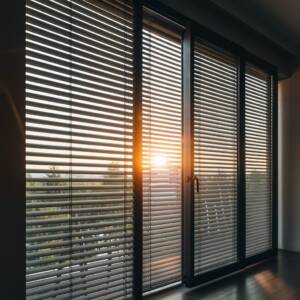Have you ever opened your window for fresh air only to find yourself swatting away bugs or dealing with unwanted debris? Window ventilation screens are here to solve that problem. They let you enjoy the cool breeze without any of the hassles. Think of them as the unsung heroes of home comfort, quietly working to keep your indoor space pleasant and pest-free.
In this article, we’ll explore everything you need to know about window ventilation screens. From their benefits and types to installation and maintenance, we’ve got it all covered. Ready to dive in?
What Are Window Ventilation Screens?
Window ventilation screens are mesh barriers installed on windows to allow airflow while keeping out insects, dust, and debris. They act as a protective shield, ensuring you enjoy fresh air without compromising on comfort or cleanliness. These screens are especially popular in homes, offices, and even recreational vehicles.

Benefits of Window Ventilation Screens
Why should you invest in window ventilation screens? Let’s take a look:
Fresh Air, Minus the Bugs: Say goodbye to those annoying flies and mosquitoes.
Better Air Quality: They help filter out dust and allergens, giving you cleaner air to breathe.
Energy Efficiency: By reducing the need for air conditioning, these screens can help lower your energy bills.
Increased Privacy: Certain screens provide added privacy by limiting outside visibility.
Types of Window Ventilation Screens
Not all screens are created equal. Here are the most common types:
Fixed Screens: These are permanently installed and ideal for standard windows.
Retractable Screens: Perfect for modern homes, they can be rolled away when not in use.
Magnetic Screens: Easy to install and remove, making them great for renters.
Adjustable Screens: Designed to fit various window sizes, offering flexibility.
How to Choose the Right Screen for Your Home
When selecting a window screen, consider:
Window Size and Type: Ensure the screen fits perfectly.
Material Durability: Choose from aluminum, fiberglass, or stainless steel.
Purpose: Do you need extra privacy, better ventilation, or insect protection?
Budget: Find a screen that offers the best value for your money.
Step-by-Step Installation Guide
Installing window ventilation screens isn’t as daunting as it seems. Here’s a quick guide:
Measure Your Window: Accurate measurements are key.
Choose Your Screen: Pick the type that suits your needs.
Prepare the Frame: Clean the window frame for better adhesion.
Install the Screen: Follow the manufacturer’s instructions.
Test It Out: Ensure it’s securely fitted and functional.
Common Materials Used in Window Screens
Different materials offer different benefits. Here’s a quick rundown:
Fiberglass: Affordable and corrosion-resistant.
Aluminum: Durable and weather-resistant.
Stainless Steel: Ideal for heavy-duty use.
Polyester: Lightweight and flexible.
Maintenance Tips for Long-Lasting Screens
Want your screens to last? Follow these tips:
Regular Cleaning: Use a soft brush and mild soap to remove dirt.
Inspect for Damage: Check for tears or holes and repair them promptly.
Store Retractable Screens Properly: Roll them away during harsh weather.
Avoid Harsh Chemicals: They can weaken the screen material over time.
Troubleshooting Common Screen Issues
Here are solutions to some typical problems:
Tears or Holes: Use a patch kit for quick fixes.
Loose Fitting: Re-secure the frame or adjust the tension.
Discoloration: Clean with a mixture of vinegar and water to restore its look.
How Window Screens Improve Indoor Air Quality
Did you know window screens can act as air purifiers? They filter out pollen, dust, and other allergens, making your indoor environment healthier. It’s like giving your home a pair of lungs that breathe clean air.
Cost and Affordability of Window Screens
Window ventilation screens are budget-friendly, with options ranging from $20 to $200 depending on size, material, and type. Investing in high-quality screens can save you money in the long run by reducing energy costs and repair expenses.
Innovations in Window Ventilation Screens
The latest designs include smart screens with built-in air purifiers, UV protection, and even solar panels. These features add convenience and functionality, taking traditional window screens to the next level.
DIY vs. Professional Installation: Pros and Cons
DIY Installation:
Pros: Cost-effective, customizable.
Cons: Time-consuming, may require tools.
Professional Installation:
Pros: Hassle-free, expert precision.
Cons: Higher upfront cost.
Safety Features and Add-Ons
Modern screens come with features like child-proof locks, anti-pollen layers, and reinforced mesh for added security. These enhancements make them a worthwhile investment.
Eco-Friendly Options for Window Screens
Looking for sustainable choices? Opt for screens made from recycled materials or those that offer UV protection to reduce energy consumption.
Final Thoughts: Why Every Home Needs Them
Window ventilation screens are more than just a functional add-on; they’re a lifestyle upgrade. By combining comfort, cleanliness, and convenience, they make your home a better place to live. Don’t wait to enjoy fresh air without compromise—install your screens today!
FAQs
1. Can window ventilation screens be customized to fit any window size? Yes, many manufacturers offer custom-sized screens to fit any window type.
2. How often should I clean my window screens? It’s recommended to clean them every three to six months for optimal performance.
3. Are window ventilation screens effective against pollen and allergens? Yes, certain screens are designed to filter out pollen and other allergens.
4. Can I install window screens on my own? Absolutely! With the right tools and instructions, DIY installation is straightforward.
5. Do window screens block sunlight? Some screens offer UV protection, which can slightly reduce sunlight but also protect your interiors.
